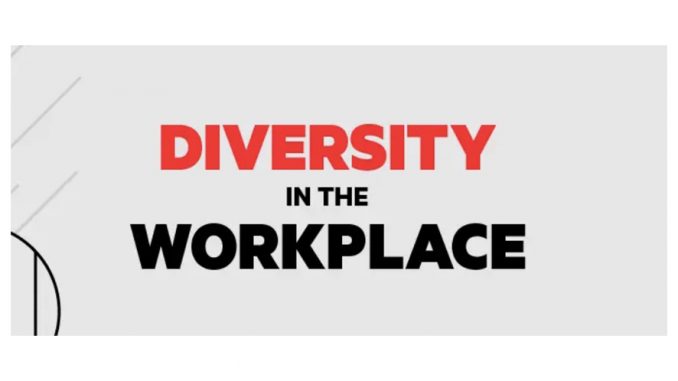
By Laura Newcomer
The topic of diversity is gaining more and more attention in workplaces across the country. And it should.
Devoting national and local attention to exploring who is most excluded from the corporate ladder—and how and why—is essential if we want to dismantle the prejudices that have excluded people of different genders, ethnicities, races, abilities, and so on from the same economic and career opportunities enjoyed by people with more privileged backgrounds.
Aside from simply being the right thing to do, embracing diversity in the workplace can yield plenty of benefits. Research consistently finds that diverse companies tend to outperform homogenous ones—yet in spite of the inherent and demonstrated value of inclusiveness, American workplaces still have plenty of room to improve on the diversity front.
Here’s why inclusive workplaces are so important, plus how to make your company a more welcoming and vibrant place to work.
The Importance of Inclusion at Work
More and more people believe in the importance of inclusivity at work, which means that an increasing number of job seekers take this factor into account when assessing potential workplaces. Research suggests that up to 67 percent of job seekers consider diversity when eyeing companies and job offers.
Meanwhile, current employees also want to see greater diversity in their workplaces. Research suggests 57 percent of team members wish their company would do more to promote and increase diversity. Enhancing workplace diversity and inclusiveness can boost morale, which has a direct correlation with productivity.
Perhaps this helps to explain why research has found that the most ethnically diverse companies are 35 percent more likely to perform better than the least ethnically diverse companies. The researchers concluded this is because diverse companies are more likely to attract top talent, sustain satisfied employees, and earn favor among their customers. Inclusive companies are also more likely to drive innovation, capture new markets, and have higher cash flow.
Despite the indisputable benefits that stem from diversity and inclusion, statistics suggest diversity is still a pipe dream in many workforces across the U.S.
For instance, a study of hundreds of companies found that while 66 percent of companies claimed to have developed strategies for hiring a more diverse workforce, only 25 percent of them have set concrete targets for gender diversity. Perhaps this is because there’s a misconception that women are equally represented in the workplace. For example, nearly 50 percent of men believe women are well represented in leadership at organizations where women hold only 10 percent of senior positions.
Stats about racial and ethnic diversity aren’t any better: Research suggests that Latinx and Black Americans are woefully underrepresented. And in one survey, only 48 percent of Black women reported feeling like they have the same opportunities in the workplace compared to their white peers.
Clearly, when it comes to making workplace diversity a reality, there’s still a lot of work to be done. And it’s work that’s well worth doing.
How to Work Toward a Diverse and Inclusive Workplace
Understanding the importance of diversity and inclusiveness is one thing. Actually making these cornerstones of your company culture is another. No matter where you’re at on the path toward greater diversity and inclusion, the following strategies will help ensure you bake these values into the foundations of your workplace.
Make the hiring process as transparent as possible
Inclusive practices start before you even onboard someone to your team. If you want to invite applications from diverse applicants, then it’s essential to make your application process inviting and accessible.
Create an equal opportunity policy
While codifying inclusivity isn’t the end all be all of diversity, it is an important start. Writing inclusiveness into your company’s policies and procedures helps establish diversity as a company-wide priority and provides team members with a legal safety net. It also communicates to prospective and current employees that the company is willing to take action in the name of inclusivity.
Train leaders and managers to practice inclusion
Team leaders and managers set the tone for workplace culture. If they model inclusiveness, then other team members are more likely to do the same. That means it’s essential to train your leaders and managers to practice inclusion. If they’re resistant, that may be a sign they’re not properly equipped to lead a diverse team.
On a related note, it’s important to make sure leadership and management teams are themselves diverse. Preaching diversity without practicing it is unlikely to create trust among team members.
Currently, only 20 percent of C-suite roles are held by women, and women of color make up only 3 percent of these roles. Meanwhile, white men are significantly more likely than any other demographic to hold managerial roles. These figures need to change for any workplace to effectively practice and promote diversity.
Make your workplace more accessible
Diversity isn’t only about gender and race. It also includes people with all ranges of physical and neurological abilities. If you want to embrace diversity across the board, then it’s essential to make sure your workplace is accessible to as many people as possible.
This applies in the more subjective sense—as with making your hiring process less biased, per the section above—and in the very physical sense. Your workplace should be ADA compliant to ensure people of all physical abilities can comfortably access and operate in the space. Also, be sure to solicit feedback from members of your team who may be differently abled and incorporate their feedback into office planning and organization.
Make sure inclusion is not a one-time thing
Inclusion doesn’t end when you’ve hit a certain quota for minority representation or attended a weekend workshop on diversity. Instead, it should be practiced on an ongoing, daily basis.
Practicing inclusiveness from day to day could manifest in a number of ways, from ensuring that everyone is heard in meetings to promoting flexible working structures, making sure team members of all backgrounds have opportunities to advance, developing mentorship programs, holding team members accountable for microaggressions, and so on.
Include the entire team’s perspective
For a company to be authentic and effective, inclusive practices and procedures can’t be made in a vacuum; instead, they need to be developed in an inclusive way. That means soliciting feedback from the entire team so you can better understand the unique challenges, privileges, and perspectives of different individuals and groups.
By regularly asking your employees about their experiences—ideally anonymously so respondents are more comfortable being honest—you’ll be able to identify issues as early as possible so you can take steps to correct them. Additionally, soliciting diverse perspectives will help ensure that policies or procedures aren’t aligned strictly with the biases (whether conscious or not) of whoever made them.
Take note of issues and make adjustments accordingly
As noted above, inclusivity requires ongoing vigilance in order to ferret out biases and ensure the working environment remains accessible and inviting to people of all backgrounds. Part of this process requires being receptive when issues arise and being willing to make adjustments as needed. If team members feel unwelcome, then it’s important to take action—whether that means hosting a diversity training, reprimanding discriminatory team members, or adjusting workplace policies.
For your company to enjoy the many benefits of a diverse team, leaders at every level of your company need to be committed to creating a hospitable and supportive environment for team members from all walks of life. Consider these strategies—and others—to create a foundation for a more diverse and inclusive workplace.
Article provided by Zerocater.com.

